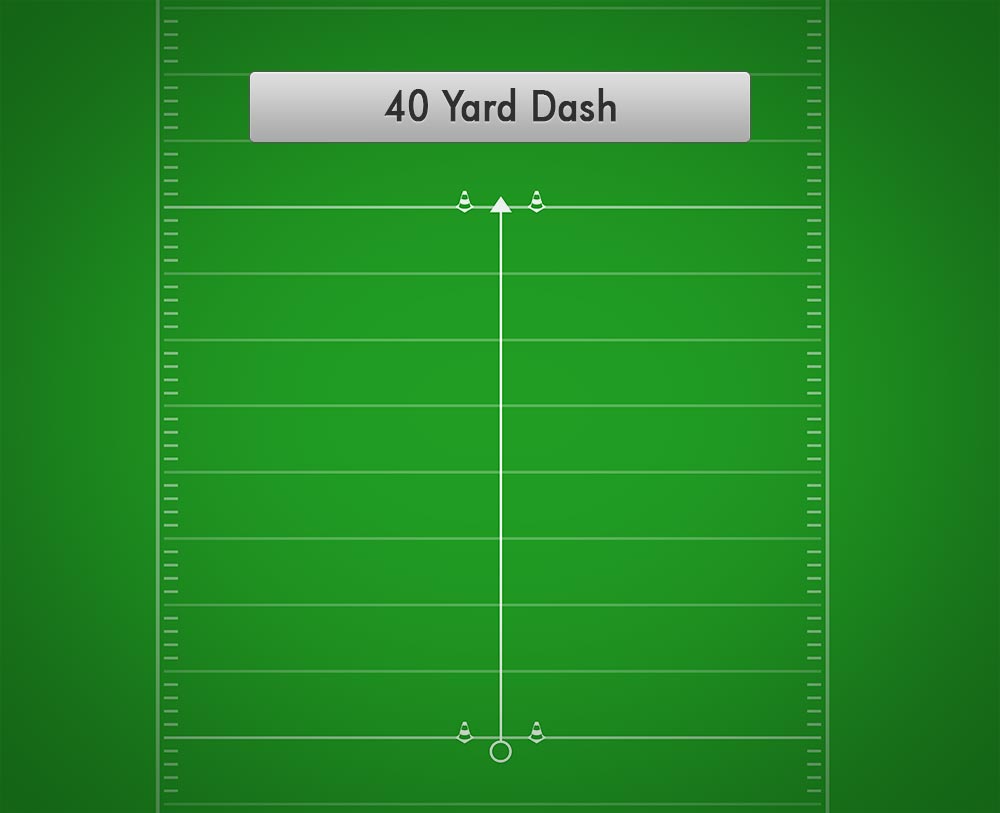The 40-yard dash, a benchmark in the realm of speed and agility, holds a transcendent position in both football and athletic training. As the final assessment of an athlete’s raw speed, it mesmerizes scouts, coaches, and fans alike. Yet, nestled within that seemingly simple distance is a nuance often overlooked by aspiring athletes—the pivotal role of the 10-yard split. This initial burst of speed can serve as a harbinger of one’s overall sprinting prowess, offering insights far beyond the clock’s final tick at 40 yards. Understanding how your 10-yard split affects your 40-yard dash can significantly shift your perspective on training, performance, and ultimately, success on the field.
To appreciate the significance of the 10-yard split, let us delve into the mechanics of the sprint. The 40-yard dash is not just a straight-line sprint; it’s a symphony of acceleration, maximum velocity, and deceleration. The journey starts explosively, as the athlete reacts to the sound of the whistle or gun, propelling them into instantaneous movement. In those first crucial 10 yards, an athlete’s power, technique, and explosive strength come into play. Herein lies the secret: the 10-yard split provides a window into these explosive capabilities. Most elite athletes clock their 10-yard split between 1.5 and 1.8 seconds—an indicator of their readiness to dominate the 40-yard distance.
Why does this fast start matter? The reason is straightforward yet profound. Sprinting is inherently a race against time, and the initial 10 yards can define the momentum that carries an athlete through the remaining distance. If an athlete fails to achieve a rapid split time, their overall time in the 40-yard dash could suffer, regardless of how fast they can run in the open field. This is especially crucial in sports like football, where a player’s ability to accelerate from a standstill can be the difference between making a crucial play or being left behind.
Many athletes mistakenly focus solely on improving their overall 40-yard time without realizing that the key to unlocking that performance lies at the race’s outset. Maximizing your 10-yard split requires a dedicated training regimen that prioritizes explosive starts and acceleration mechanics. Think of the 10-yard split as the foundation upon which the rest of your sprinting ability is built. Improving it can provide a ripple effect that enhances not just your 40-yard time but also your overall performance on the field.
One common training method involves resistance sprinting, where athletes practice accelerating against a slight external load. This could be achieved using sleds or parachutes. By introducing this element of resistance, athletes must engage their muscles more aggressively to achieve an explosive start. As they become proficient in overcoming the added weight, transitioning to a lighter load—their body weight—makes the initial 10 yards feel remarkably easier.
Furthermore, technique cannot be undervalued. Poor form can severely inhibit acceleration. Runners should focus on optimizing their body position in the starting stance. An ideal posture involves a slight forward tilt, with the weight shifted onto the balls of the feet, ready to spring forward. The initial leg actions are quintessential; high knee drives combined with assertive arm movements can generate the drive necessary to explode out of the starting blocks.
Emailing optimal training into your regimen requires monitoring your progress meticulously. Regularly clocking your 10-yard split times can illuminate your training success. The beauty of numbers lies in their ability to provide a clear metric for growth. If your time improves, your training methods are effective; if it plateaus, adjustments may be required. Understanding these nuances can be the difference between striving for success and achieving it.
At the next juncture, it is also essential to recognize how mental preparedness complements physical ability. The psychological aspect often goes overlooked. A lack of confidence can impede an athlete’s ability to respond explosively. Visualization techniques can be particularly beneficial. Athletes should envision themselves executing the perfect start, experiencing the thrill of explosive acceleration and the satisfaction of achieving their desired split time. This mental rehearsal can create a powerful synergy between body and mind, reinforcing effective movement patterns in real-world scenarios.
Ultimately, the relationship between your 10-yard split and your 40-yard dash is not merely a numerical correlation; it encapsulates a holistic approach to performance. As athletes prioritize training their initial acceleration, they unlock an array of benefits, from enhanced physical prowess to elevated confidence. This essential adaptation can create a cascading improvement effect, leading to successes that reach beyond just the sprint itself.
In conclusion, the speed secrets of the 10-yard split may be hidden in plain sight. Recognizing its importance and altering the training paradigm can unlock the door to unprecedented performance levels. Whether you’re a seasoned athlete or an aspiring contender, honing your 10-yard split can turn your 40-yard dash into a formidable tool. By understanding how these two components intertwine, athletes can transcend traditional limits, paving their pathway to peak performance. So, step up to the plate and embrace the transformative power of your 10-yard split—your sprint to success awaits!
